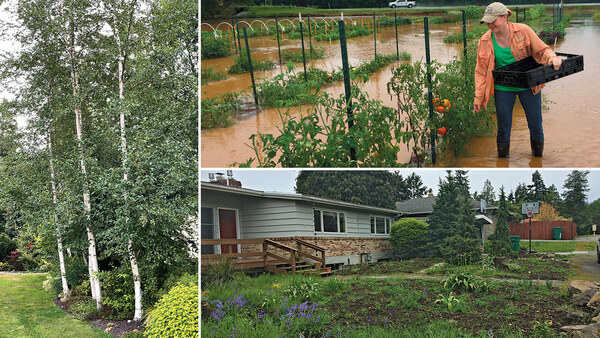
Most vegetable gardeners have learned some of their best gardening practices the hard way (including me). It takes time to find out what works and doesn’t work. But after a dreadful season, who wants to wait another year to try, try again?
Here are some of my top tips for avoiding 10 common vegetable gardening mistakes. As gardeners we know it’s impossible to avoid every problem in the garden, but these tips should help reduce some of the vegetable-growing challenges:
- Starting seeds too soon. Patience is key at the beginning of every new gardening season. If seeds are started indoors too soon, plants will grow too tall before it’s time to plant them. Check with your county extension for the prime planting dates in your area and then match those to the number of days for sprouting and transplanting.
- Planting too early. Patience comes in handy when it’s time to plant, too. Cool-season crops can be planted early in the season, but tomatoes and other warm-season fruits, vegetables and herbs need warm nights to get growing.
- Not checking the soil. A soil test is the best way to know what the garden soil needs, if you want to grow a healthy garden. A soil test helps you decide what amendments the garden needs before planting.
- Planting too much. Be realistic when it comes to the size of your vegetable garden. It’s easy to get carried away and plant too much. Consider how much time you really have for maintaining the garden. A smaller, easy-to-tend vegetable garden takes less time and inputs than a larger garden bed.
- Not following instructions. Be sure to read the seed packet instructions or the transplanting information for every crop you plant. It’s important to follow the instructions for placing plants, spacing plants, thinning plants and knowing when and how to harvest them.
- Failing to fertilize. Keep track of when to fertilize and what kind of fertilizer vegetables need. A healthy garden will need regular applications of fertilizer or a well-balanced plant food. If you skip this step, plants probably won’t live up to your expectations.
- Overwatering. Too much water leads to plant problems. It’s important to maintain good soil moisture, but roots need to be able to breathe, too. Wait for the top inch or so of soil to dry before watering. Some plants droop naturally during the day, so wait to see if they perk up before adding more water.
- Letting garden get weedy. A weedy garden causes problems and not because of its looks. Weeds compete with vegetable plants for sun, water and food. Another downside of a weedy garden is insect pests are attracted to weeds. Add a layer of organic mulch, like straw, dry untreated grass clippings or even shredded newspaper, to keep weeds from growing.
- Planting least favorite edibles. Many beginning gardeners think they need to plant one of every kind of vegetable in their gardens, and then some of those vegetables go to waste. It’s best to plant just the fruits, vegetables and herbs that you and your family likes to eat.
- Giving up too soon. There are some seasons when gardeners can do everything right, but things still go wrong. Hail, drenching rains, drought, all kinds of pests, and unexpected circumstances can cause challenges in the garden. But don’t give up on the joy of growing and enjoying home-grown vegetables. Simply find ways to overcome the challenges within your control. And then try, try again.
Fine Gardening Recommended Products

A.M. Leonard Deluxe Soil Knife & Leather Sheath Combo
Fine Gardening receives a commission for items purchased through links on this site, including Amazon Associates and other affiliate advertising programs.



















Comments
Log in or create an account to post a comment.
Sign up Log in